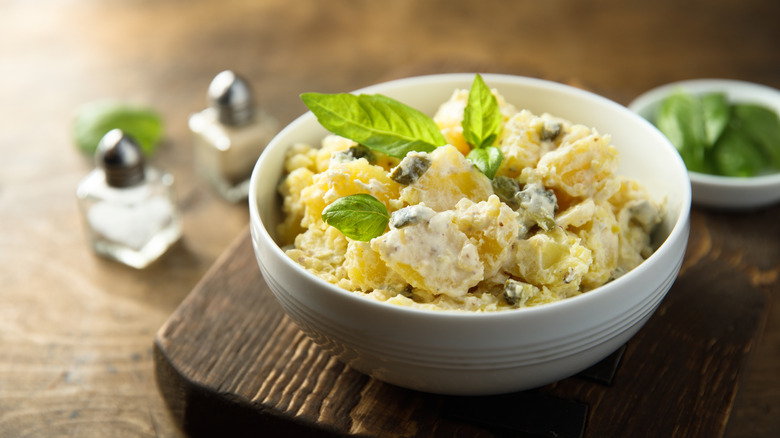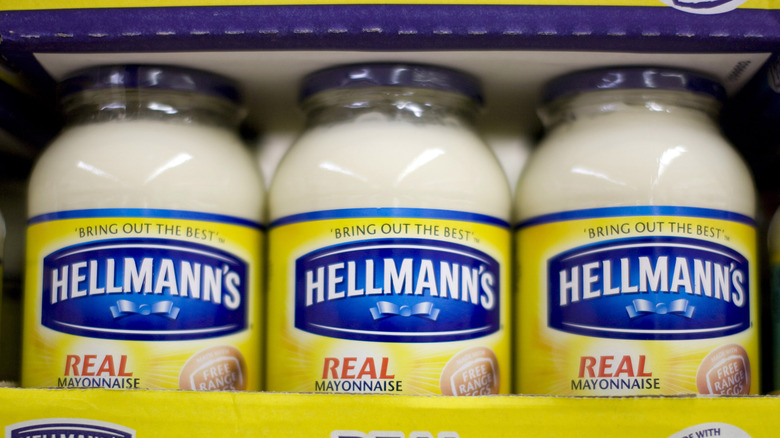The Downside Of Using Mayo In Your Potato Salad
It wouldn't be a picnic –- or a luncheon, or a buffet dinner –- without potato salad. It's an all-weather, all-occasion standard, and it's hard to think about potato salad without also calling mayonnaise to mind. After potatoes, mayo is typically the star ingredient. But, does it have to be? Or, should it be included in the dish at all?
Mayonnaise is a combination of eggs, oil, and vinegar, according to Livestrong. The simple recipe makes mayo a staple condiment, but its ingredients might be responsible for more than just a favorite sandwich spread. Eggs, the primary ingredient, are part of a heart-healthy diet, via the American Heart Association. But, they also make mayo (and, subsequently, most potato salads) off-limits to vegan party guests. Plus, unless you're using pasteurized eggs, those raw eggs in your mayo pose the threat of salmonella. Mayo also carries a hefty amount of saturated fats: 1.6 grams per serving size, says Livestrong.
Temperature is another major factor to your salad success. The bacteria Clostridium perfringens is one of the most common foodborne pathogens, causing nearly one million cases of foodborne illnesses every year in the US alone, reports the CDC. C. perfringens, it says, is commonly found in foods kept at an unsafe temperature (between 40-140 degrees Fahrenheit) –- like, for instance, a big bowl of mayonnaise on an August day. Sound appetizing?
How to skip the mayo alltogether
Potato salad might be a great fit for your backyard barbecue, but egg-heavy mayo definitely isn't a good fit for the summer sun. As Ben Chapman, department head of Agricultural and Human Sciences at North Carolina State University, explains, the high acidity of mayonnaise typically makes it resistant to the development of most bacteria. However, in potato salad, an array of low-acidity ingredients, including potatoes, pasta, and hard-boiled eggs, lower potato salad's overall acidity which, combined with the moisture of mayo and the warmer temperature from eating outside at a picnic, can create an ideal environment for bacteria growth.
To prevent a mayo-based potato salad from spoiling, the CDC recommends keeping it out at room temperature for two hours, or for just one hour if the temperature reaches 90 degrees Fahrenheit or higher. Perhaps reserve making the dish for cooler indoor events only.
For an even safer bet, MyRecipes recommends swapping the mayo out for a thin, vinegar-based salad dressing. To thicken up the salad, it says, toss your cooked potatoes in a couple tablespoons of light vinegar after boiling. The potatoes will absorb the vinegar as they cool and become denser. Then, while they're still warm, coat your potatoes in whatever dressing you choose; For recipe inspiration, give this mayo-free French potato salad a try.
Healthline suggests pesto, mustard, avocado, hummus, or olive oil as fitting substitutions, as well. Get ready for a show-stopping flavor profile.

